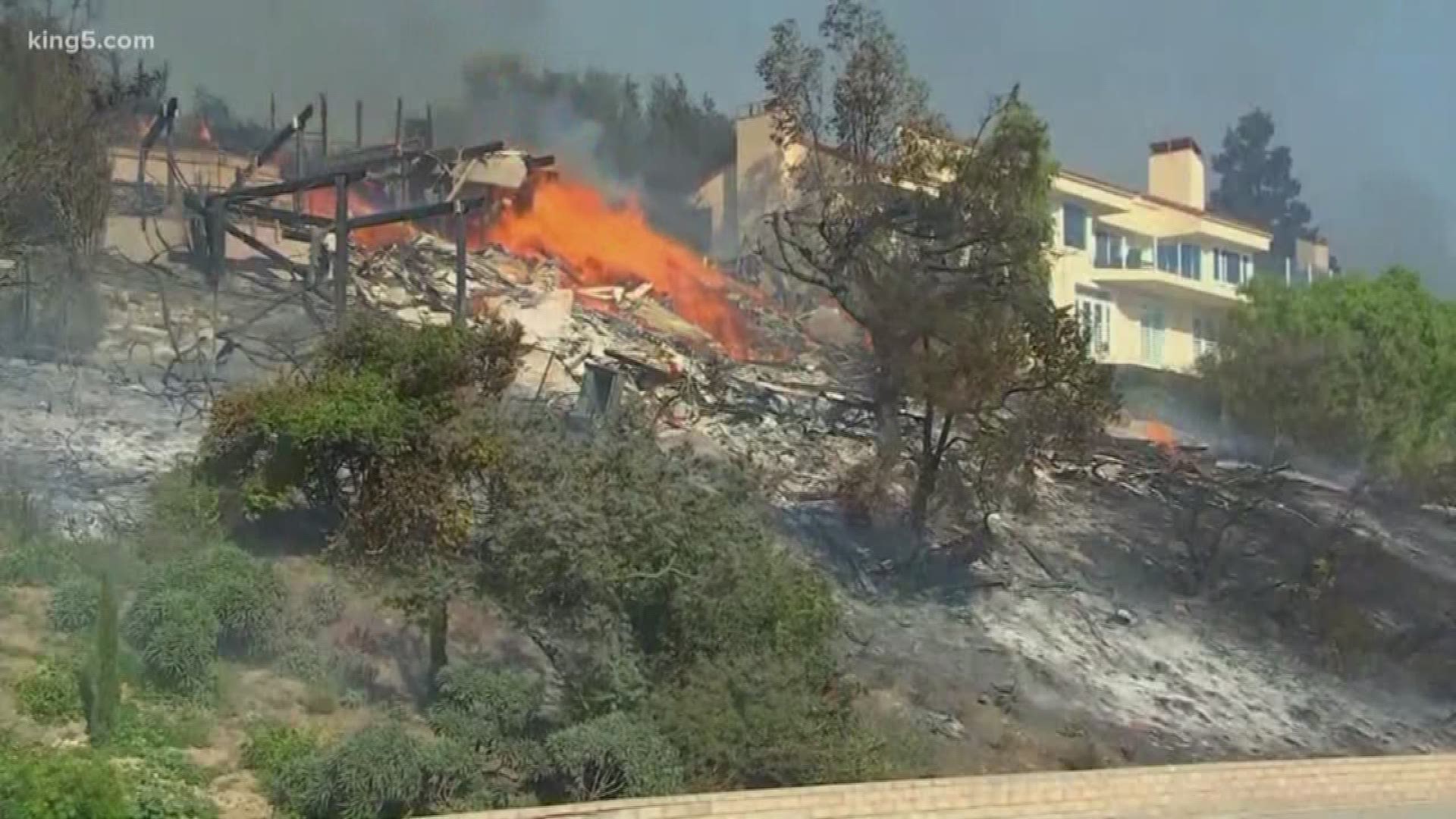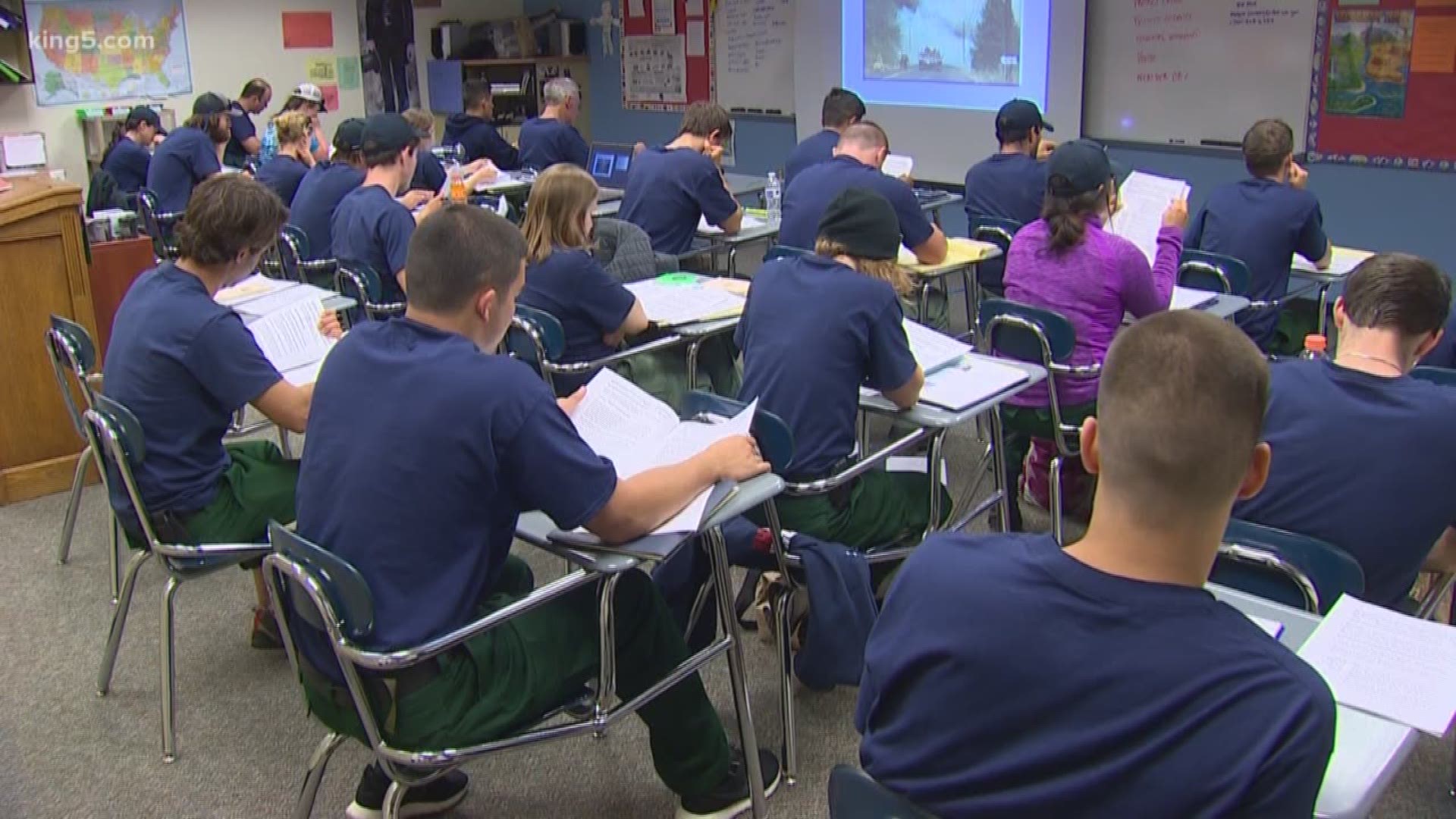SPOKANE, Wash. — The state is months away from wildfire season, but Public Lands Commissioner Hilary Franz has proposed a plan to strengthen the ways that Washington can prevent and respond to wildfires.
Franz released the 10-year plan last week as part of her $55 million budget request to the Legislature to improve the state's firefighting abilities in the face of climate change and more residents moving into fire-prone areas.
The plan would add 30 full-time and 40 seasonal firefighters to the Department of Natural Resources, and add two helicopters to the firefighting fleet.
It would also create a wildland fire-training academy that different agencies could use.
In a news conference Thursday, Franz said the plan included input from nearly 1,000 people.
"We must act like our safety, our economy and our lives depend on it," Franz said. "Because they do."
Franz said she also wanted to speed up work involved in the agency's forest-health plan to allow for more controlled burns. She also wanted to improve DNR's ability to communicate with residents who don't speak much English.
State Sen. Brad Hawkins, R-East Wenatchee, said the plan should be a top priority for legislators.
"I believe that this issue of wildfires and wildfire suppression is as important to the state of Washington as education, as mental health, as other infrastructure issues," Hawkins said.
The federal government shutdown could hamper firefighting efforts, Franz said, noting that some training programs already have been canceled because of the shutdown.
Between 2013 and 2018, DNR said it cost an average of $153 million in state and federal money per year to fight wildfires. That period included Washington's record-setting wildfire seasons in 2014 and 2015.
Fires those two years destroyed hundreds of homes, burned 2,300 square miles and in 2015 killed three firefighters.
More recent fire seasons in Washington have reduced air quality across the state in summer months.
Last year, DNR responded to more than 1,850 wildfires, a record number, that burned about 440,000 acres. Most of the fires were put out while still small, the agency said.
As the state's population grows, more than 2.2 million homes now lie in the potential path of wildfires, according to a recent U.S. Forest Service study.
The highest risks are in Eastern Washington, which has hotter and drier summers than the region west of the Cascade Range.
"Wildfire fire is not an east side or west side problem. It is not an urban or rural problem. Wildfire is a problem for all of Washington," Franz said.
Fire suppression costs make up about 9 percent of the total costs of wildfires, the agency said. Much higher are the costs of lost business, infrastructure, habitat, timber, grazing, and agriculture resources, disaster recovery, and health impacts, DNR said.
"We can't stop fires from occurring, but we can stop doing the same things we've always done in dealing with them, said Chief Dave LaFave of Cowlitz 2 Fire & Rescue and the Washington Fire Chiefs Association.


